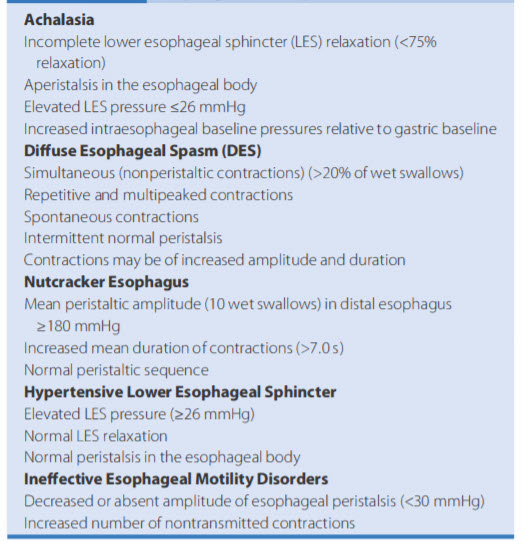Question 30#
Which of the following disorders involves simultaneous nonperistaltic contractions of the esophagus?
A. AchalasiaB. Diffuse esophageal spasm (DES)
C. Hypertensive lower esophageal sphincter
D. Nutcracker esophagus
Correct Answer is B
Comment:
The classic manometric findings in these patients are characterized by the frequent occurrence of simultaneous waveforms and multipeaked esophageal contractions, which may be of abnormally high amplitude or long duration (Table below). Key to the diagnosis of diffuse esophageal spasm (DES) is that there remain some peristaltic waveforms in excess of those seen in achalasia. A criterion of 30% or more peristaltic waveforms out of 10 wet swallows has been used to differentiate DES from vigorous achalasia. However, this figure is arbitrary and often debated.
The LES in patients with DES usually shows a normal resting pressure and relaxation on swallowing. A hypertensive sphincter with poor relaxation may also be present. In patients with advanced disease, the radiographic appearance of tertiary contractions appears helical, and has been termed corkscrew esophagus or pseudodiverticulosis. Patients with segmental or DES can compartmentalize the esophagus and develop an epiphrenic or midesophageal diverticulum between two areas of high pressure occurring simultaneously.
Manometric characteristics of the primary esophageal motil ity disorders:
